
If you love to cook spicy foods and you’re a gardener, you should try growing hot peppers. There is nothing quite so cheery as seeing their bold colors in the garden. Well, except for maybe seeing a dried string of them hanging in your pantry.
Most of these peppers are pretty easy to grow. You’ll have even greater success growing them yourself by following Cheryl’s 8 Secrets To Grow a Bumper Crop of Peppers.
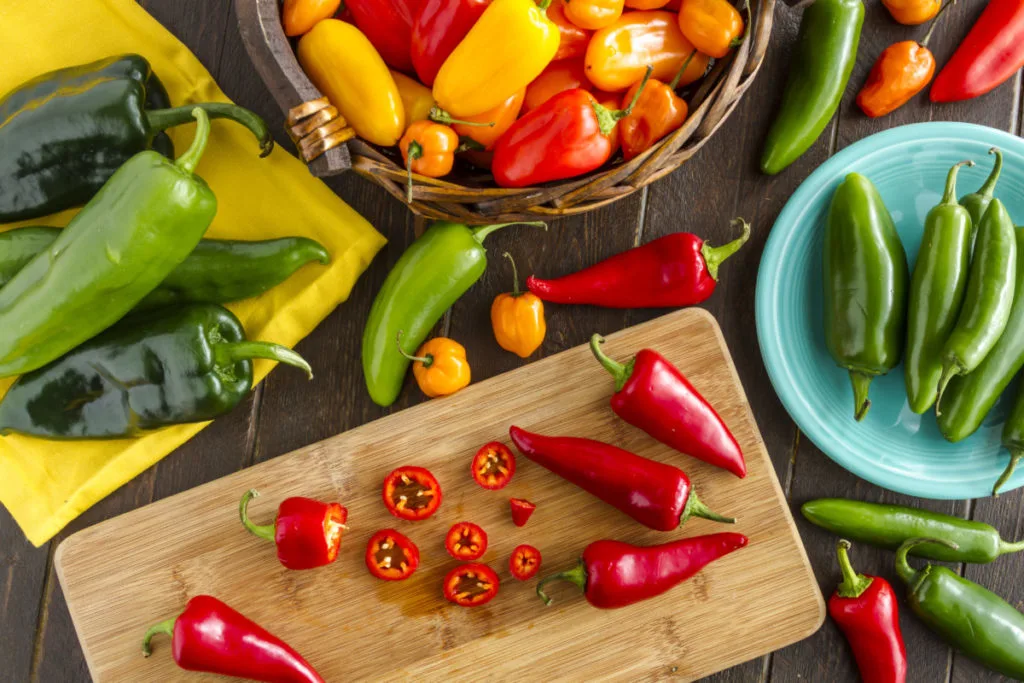
But which ones should you grow?
How hot are they?
What if I want flavor more than heat?
Oh, my dear reader, I have got you covered. I’ve selected ten great spicy peppers, varying in heat, for you to grow in your garden.
I’ve chosen these specific varieties with the cook in mind. Whether it’s making a batch of chili that will warm you to your toes, snacking on blistered shishitos, or making a hot sauce that will melt your face off – there’s a pepper here for everyone.
Why Are Hot Peppers Hot?
Hot peppers get their fiery heat from a naturally occurring chemical substance called capsaicin. And oddly enough, that spicy flavor we enjoy so much isn’t actually a flavor. It’s our body’s natural reaction to pain.
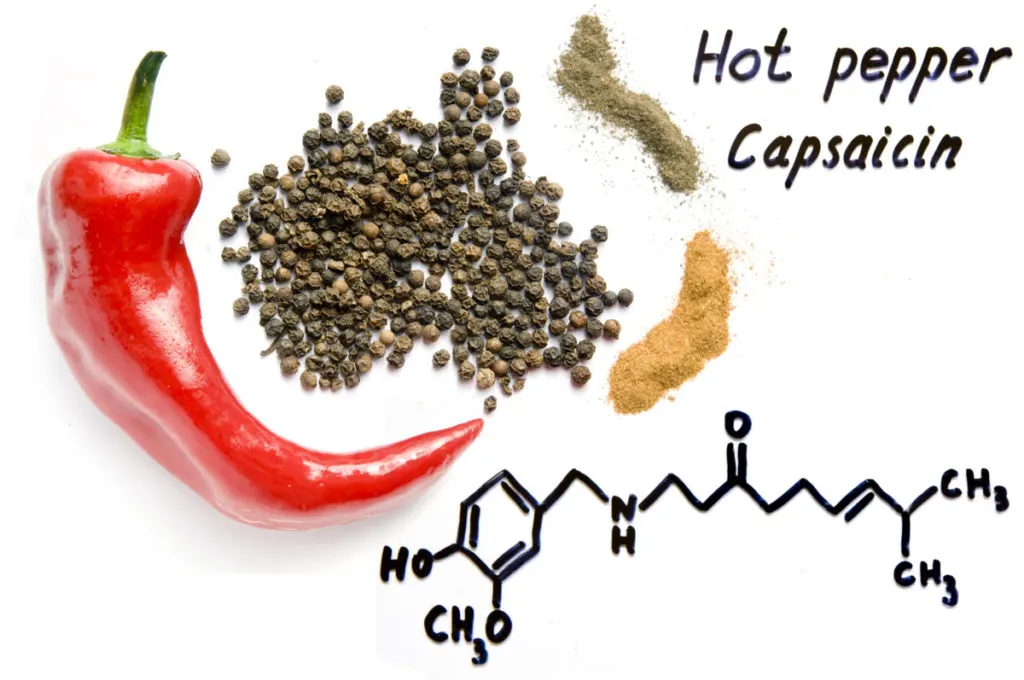
We have a specific protein in our cells that senses heat, as in temperature, which is a handy protein to have if you consistently grab your cast iron skillet by the bare handle while cooking. (No, I’m not referring to myself, why would you think that?)
When activated, this protein sends a message to the brain saying, “She’s grabbing the hot skillet handle again,” causing me us to pull our hand away.
Capsaicin also triggers this protein, even though we aren’t eating something hot, well, not in the temperature sense anyway. This reaction may be why some people feel a bit jangled when they eat spicy food. Our brain is saying hot, but there’s nothing to react to other than that jalapeno we just ate.
For more interesting information about capsaicin, check out this great article on Science News for Students. (Yeah, I know it’s a kid’s site, but I like sites that make science understandable for the whole family.)
The Scoville Heat Scale
Any hot pepper enthusiast worth their salt knows about the Scoville Heat Scale. But if you’re just dipping your toes into the world of spicy peppers, it’s a good thing to get acquainted with, especially if you plan on growing your own.
Named for Wilbur Scoville, the inventor of the scale, it measures how hot (generally in relation to how much capsaicin they have) peppers are. Wilbur used five people to taste-test hot pepper solutions. He would dilute the solution after each tasting, a bit more and a bit more until the heat could no longer be detected.
The lowest pepper on this scale, coming in with a Scoville Heat Unit of 0, is the green pepper, and the highest pepper, well, we’ll get to that in a bit.
I’ll bet his friends were wary of his invitations to dinner after that.
The Scoville Heat Scale is a great way to guess whether a particular pepper will be too hot for you to handle. I often look up an unknown-to-me pepper’s Scoville Heat Unit and compare it to another pepper’s SHU that I’ve eaten plenty of times, like a jalapeno.
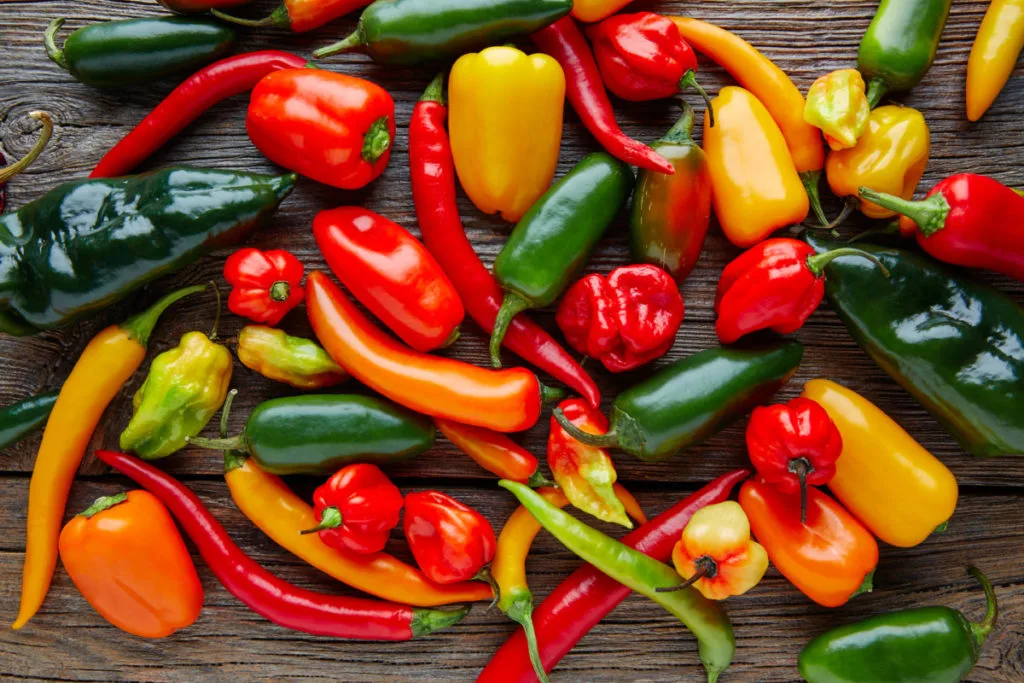
Gloves and Goggles, My Friends, Gloves and Goggles
If you’re one of those masochists (Hi, friend!) who enjoys the tear-inducing, guzzle-a-gallon-of-milk heat of peppers on the higher end of the Scoville Index, then it’s best to wear gloves when handling them in the kitchen.
You only make the mistake of cutting hot peppers and then rubbing your eyes once.
And if you’re going to do any blending, food processing or cooking where splashes may happen, such as making hot sauce or grinding homemade chili powder, you may even consider wearing a pair of lab safety goggles.
Nope, not kidding. You’ll thank me later.
Now that we’ve covered heat and spicy pepper kitchen safety, let’s look at some peppers to grow.
10 Excellent Hot Peppers to Grow for Cooking
1. Jalapeño
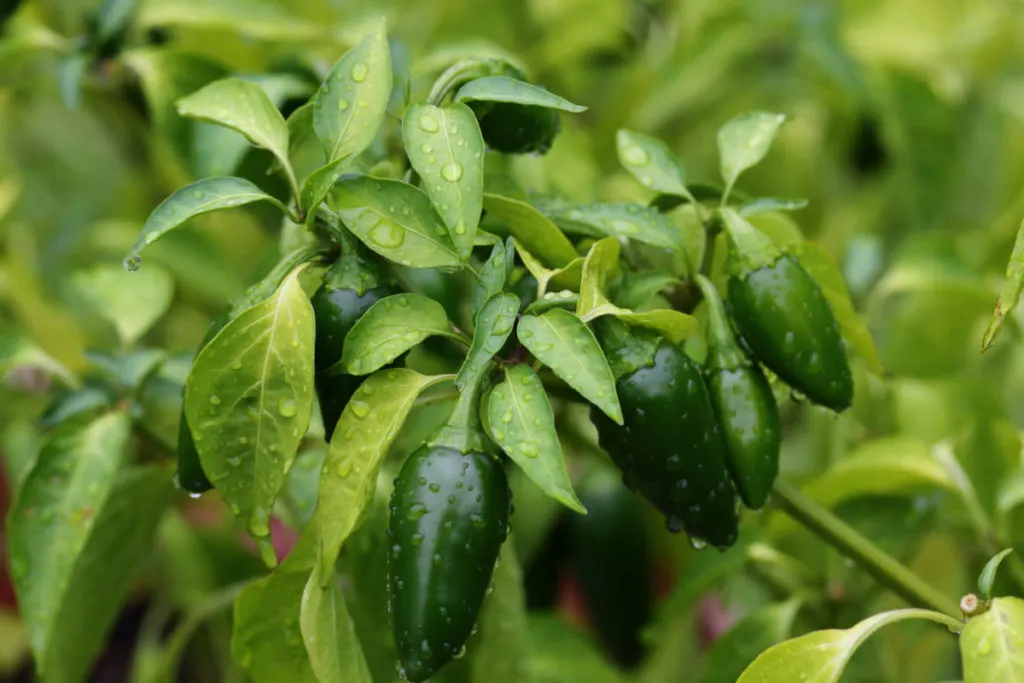
SHU – 2,500–8,000
We’ll start with one of the most familiar hot peppers there is – the good ol’ jalapeño. This pepper is particularly great to grow if you enjoy canning homemade salsa each year. The jalapeño is a great all-purpose pepper for adding a bit of kick to your dishes.
Jalapeños are usually 3-4 inches long and grow on compact bushes. Because it’s so common, you can easily find seeds and seedlings for it anywhere. Jalapeños are usually green but will turn red when they dry. Red jalapeños are usually hotter than green ones. Keep an eye out for striations (small brown lines) on the peppers; these guys are scorchers.
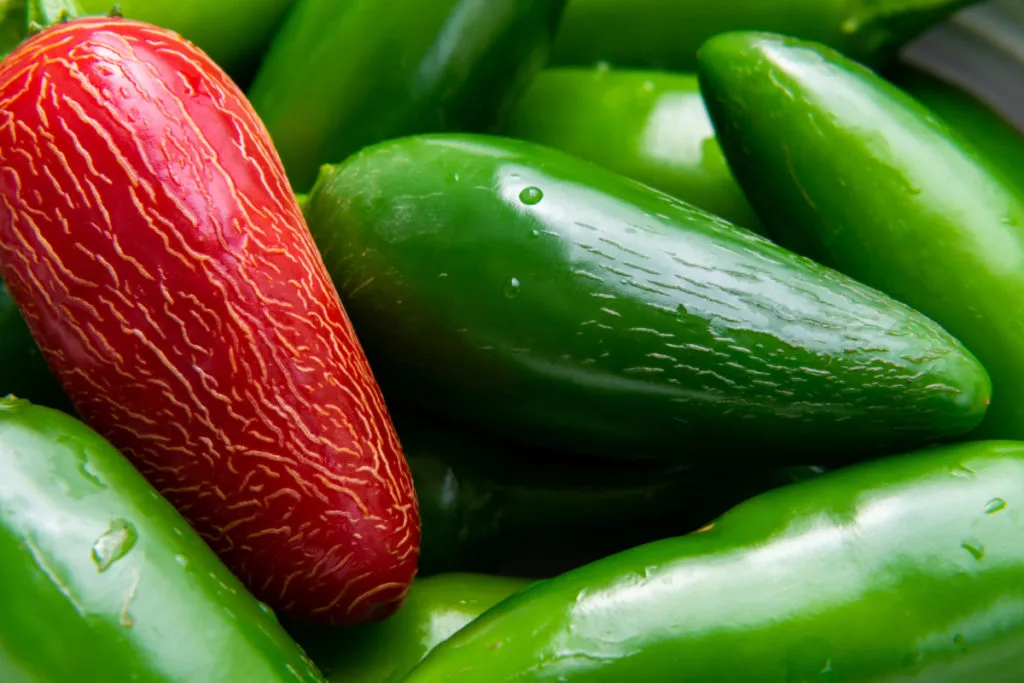
2. Poblano
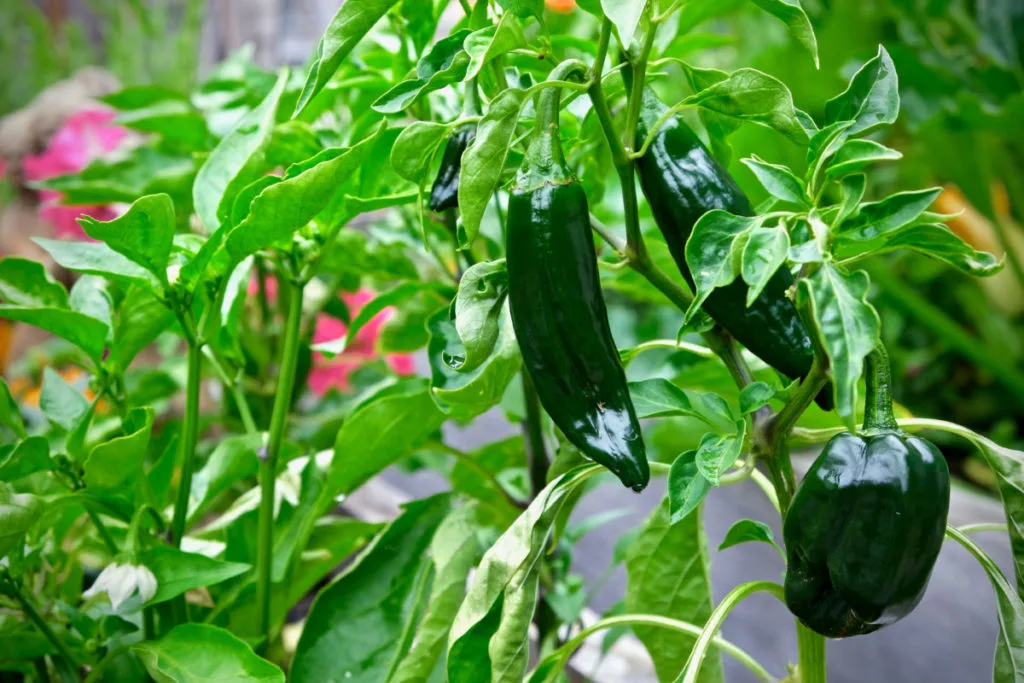
SHU – 1,000 – 2,000
Poblano peppers are one of my favorite peppers to cook with. Poblanos are a very mild hot pepper, having more of a smokey flavor than real heat. These are great peppers when you want lots of pepper flavor without the burned tongue. The peppers are anywhere from 4-6 inches long, dark green, large and somewhat flattened.
Nine times out of ten, I roast them in my oven when I cook with them. They have such a marvelous flavor when roasted that goes well with many dishes. Poblanos give depth and smokiness to chili, and if you want the most amazing bowl of grits in your life, try adding in some chopped roasted poblano peppers and shredded cheese. It’s great for breakfast topped with a fried egg or makes a warm and comforting dinner on a cold and rainy day.
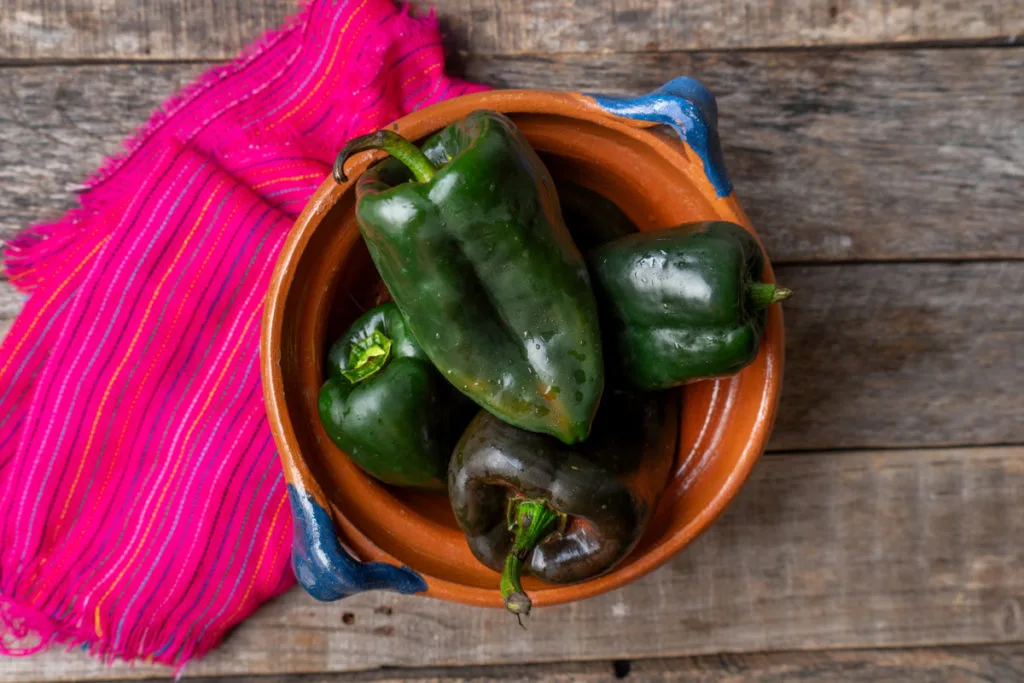
Because of their popularity, poblanos are also pretty easy to find as nursery starts if you don’t want to start your own seeds.
Poblanos are best fresh, but I’ve also had great luck freezing them after roasted and diced.
3. Shishito
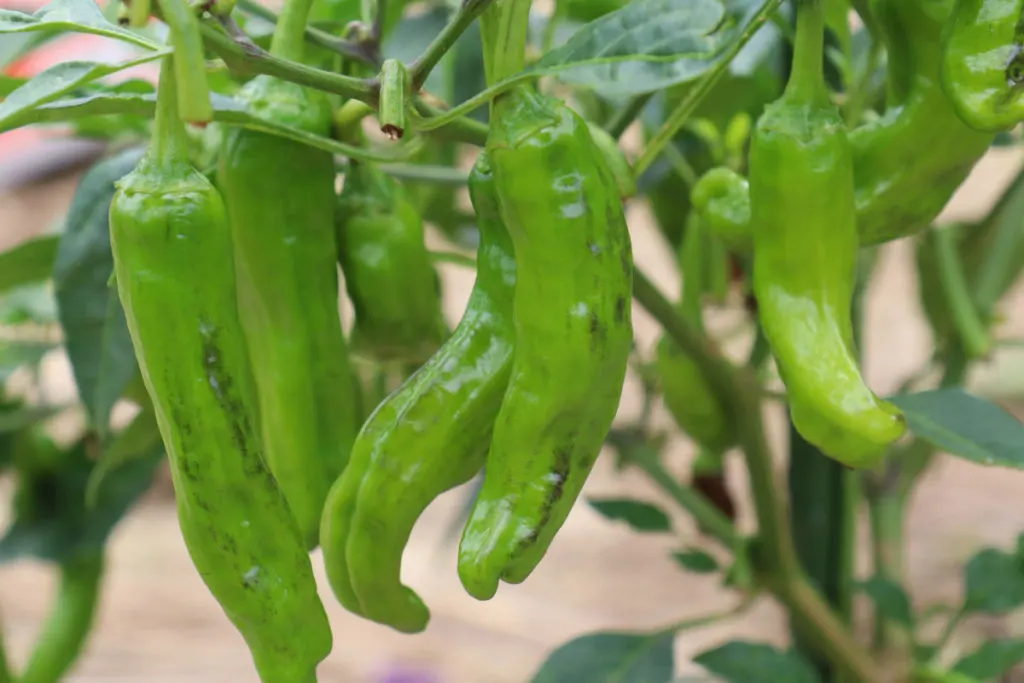
SHU – 100 – 1,000
Shishitos are my favorite hot pepper to eat, mainly because they’re so delicious to snack on. One of my favorite appetizers or sides to make these days is blistered shishitos.
We always joke and say eating shishitos is like playing Russian roulette, as about one in every ten peppers has some serious heat. But for the most part, shishitos are more about excellent flavor than a lot of heat.
The plants are quite prolific, and the peppers grow to 3-4” long.
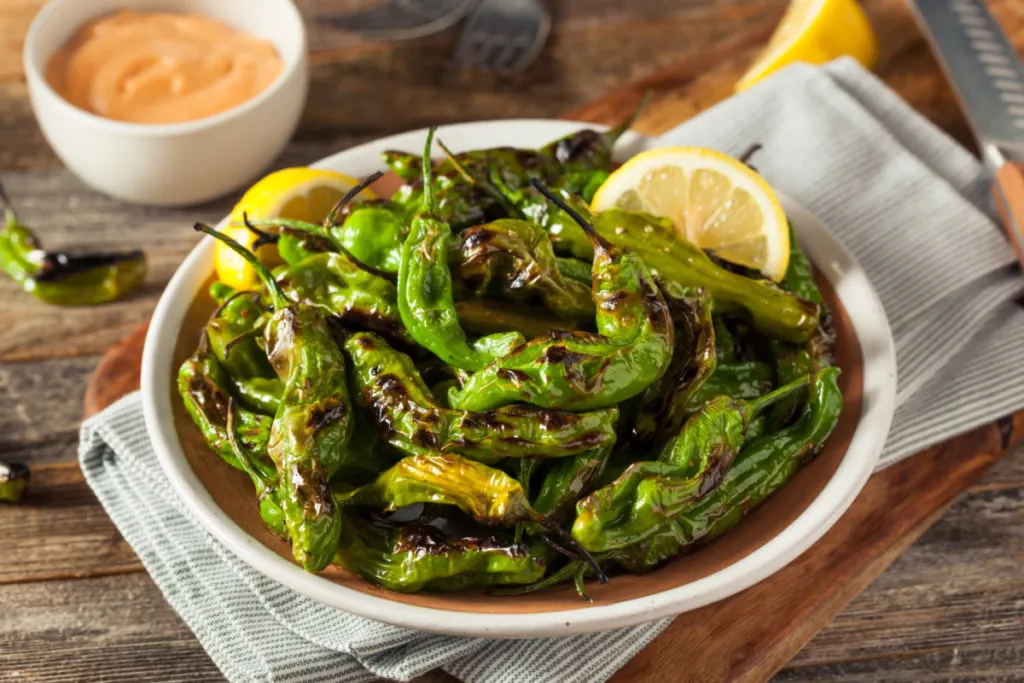
Blistered Shishitos
- Wash and dry your peppers, leaving the stem attached.
- Heat a castiron skillet (which you will use a potholder to grab the handle with, unlike me) over medium heat with your favorite high-temp oil (bacon grease works great for these).
- Toss in the peppers, letting them get hot and blistered, turning them, so each side gets blistered and browned a bit.
- Sprinkle them with sea salt and serve them right away.
- I also toss in a little garlic powder or ginger powder sometimes too.
4. Thai Chilis or Bird’s Eye Chilis
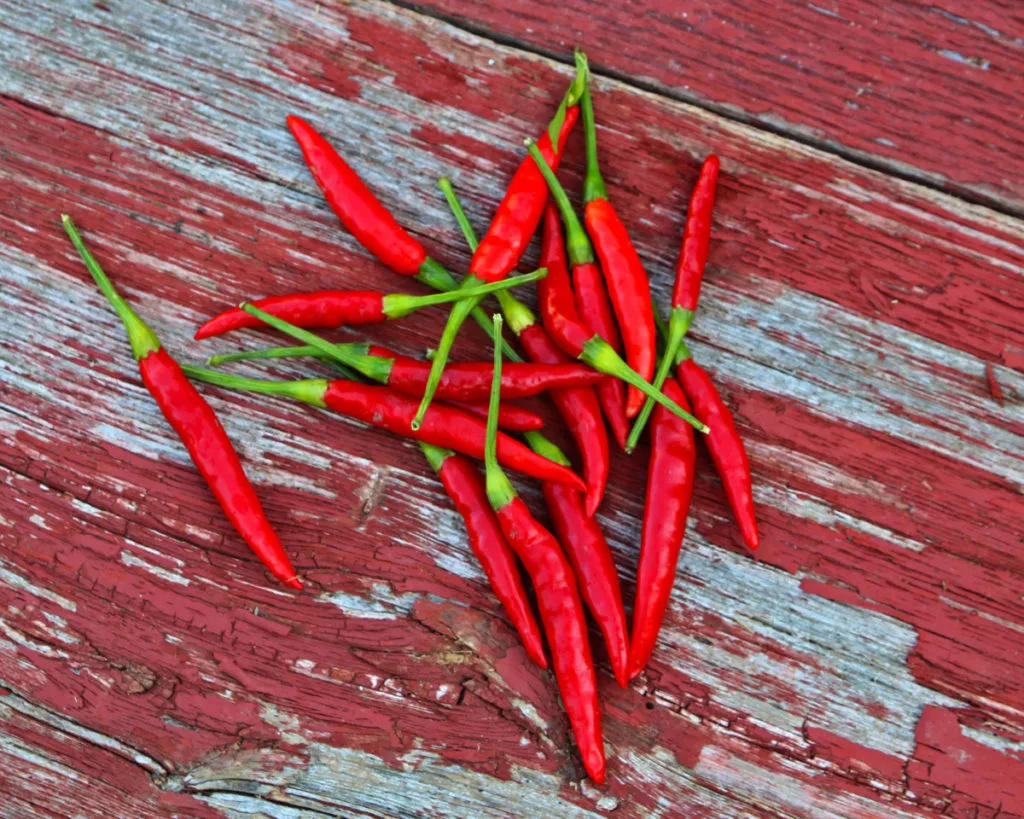
SHU – 50,000 – 100,000
Thai chilis are excellent for Asian cooking. These peppers, also known as bird’s eye chilis, are on the smaller side, but they pack a punch. One pepper is usually plenty to flavor an entire dish and still make you break out in a sweat.
They are my go-to for Asian cuisine and make for excellent spicy curries, Thai food (naturally), spicy ramen or spicy eggplant with garlic sauce; you’ll want to grow one of these.
Thai chilis are becoming more popular, so you may be able to find nursery starts at a larger garden center, but I wouldn’t expect to find them at your local chain garden center. If you want to be sure you can get a hold of them, the best way to go is by purchasing seeds and starting your own.
5. Anaheim
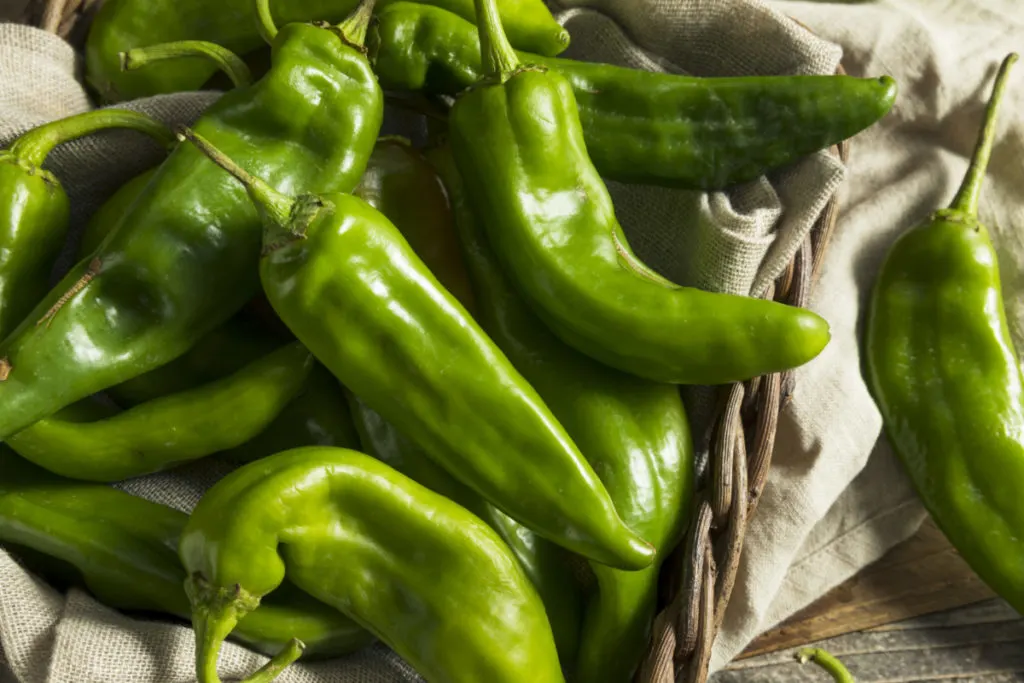
SHU – 500 – 2,500
Anaheim peppers are a great pepper if you don’t like a lot of heat but still want something a little more interesting than a green bell pepper. Slice them up raw and toss these peppers into a salad for a little extra pop.
And again, Anaheim peppers are an excellent stuffing pepper, especially if you’re feeding a crowd of mixed spicy tolerance. You can keep everyone happy by offering some stuffed peppers that are spicy and some stuffed Anaheims.
They are another common pepper that’s pretty easy to find in nurseries. Of course, you can always start them yourself too. The peppers are around 5” long and are great fresh, canned and frozen.
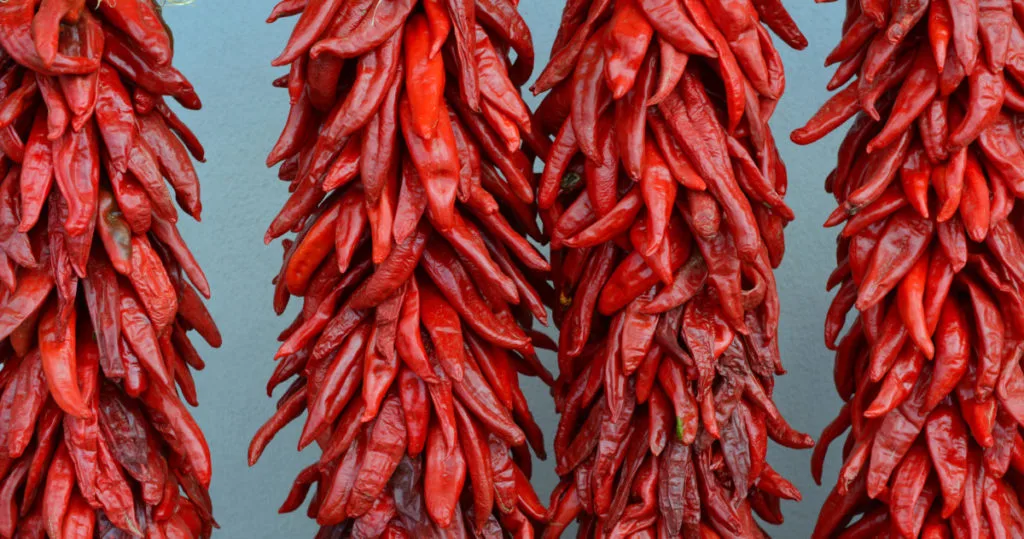
When you see red peppers braided together for decoration, it’s quite often done with Anaheim peppers.
6. Piquillo
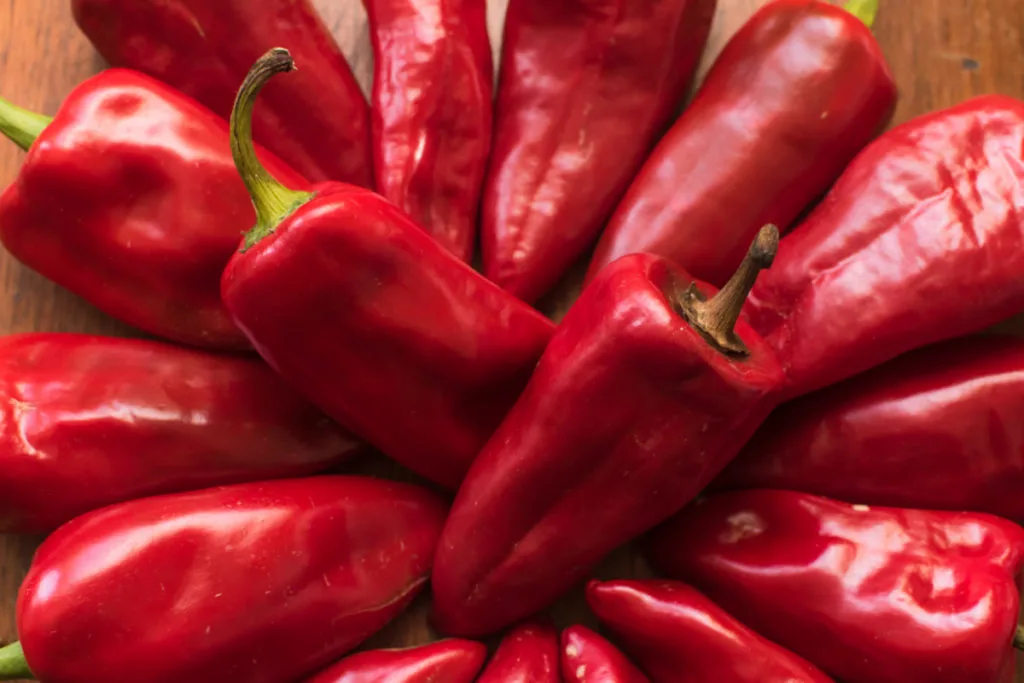
SHU – 500 – 1,000
Another great pepper that provides wonderful flavor without the burn is the piquillo. If you’ve ever bought a jar of tall roasted red peppers at the supermarket, those are piquillos.
These long, almost tongue-like peppers are 5-7” long, start green and turn a gorgeous red. Coat them in oil and roast them or put them on the grill. Roasted red pepper pasta, hummus, you name it, are all so much tastier when your peppers are freshly picked.
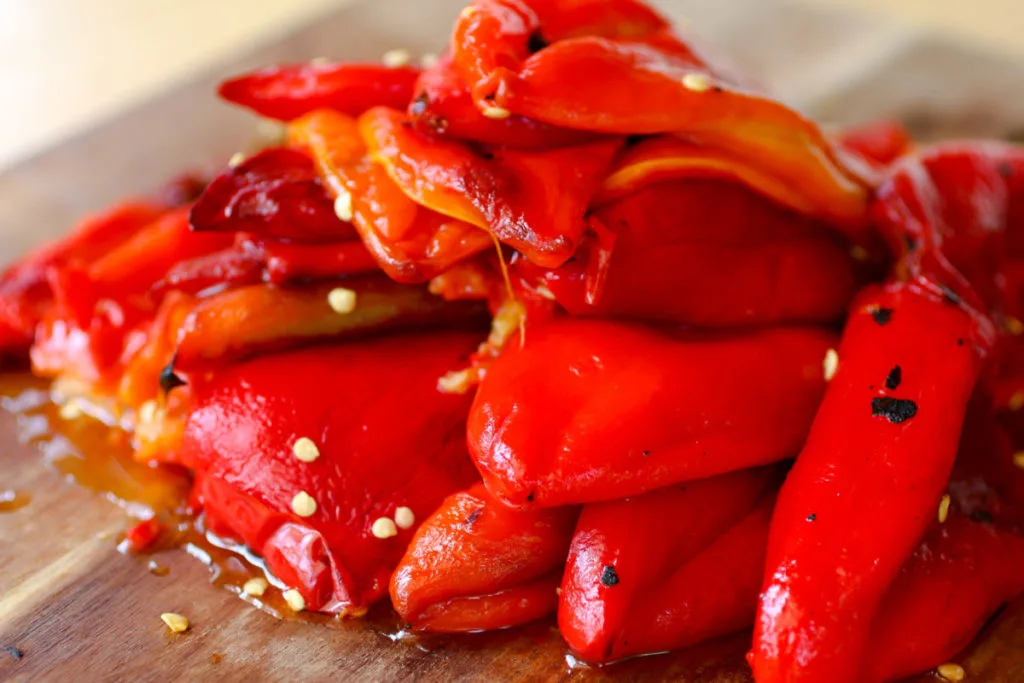
And don’t forget to pickle and can a few jars.
7. Hungarian Wax Pepper
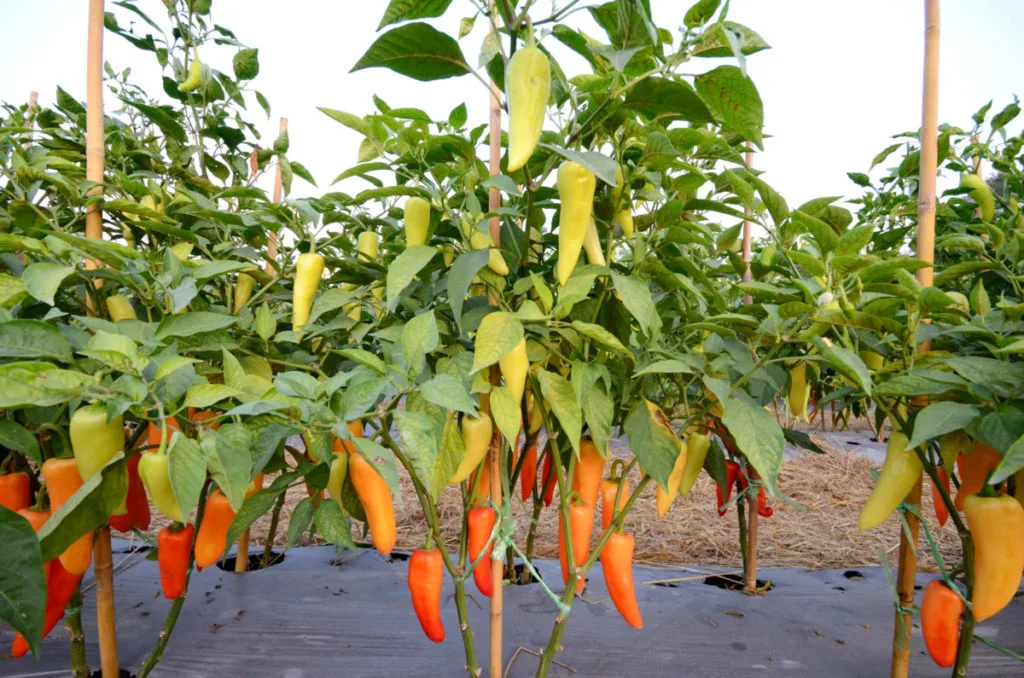
SHU – 1,000 – 15,000
If ever there was a pepper that begged to be stuffed with cheese and other goodies, it’s this one. The Hungarian wax pepper, sometimes called banana pepper, can be quite the adventure to eat as individual peppers vary quite a bit on the Scoville Heat Scale.
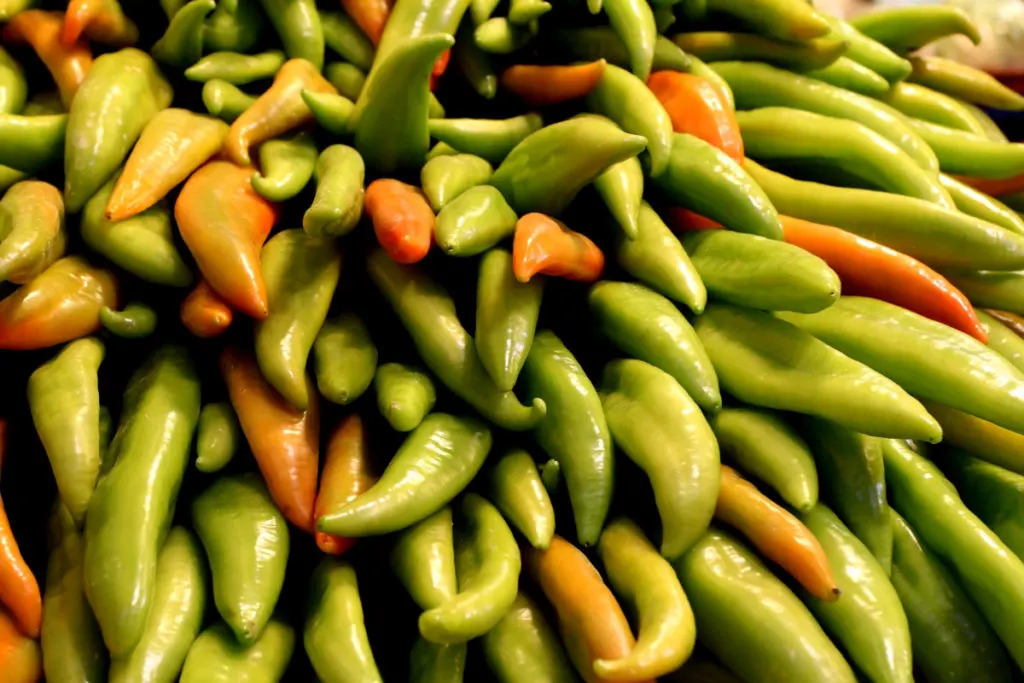
Growing them is a treat for the eyes too. Hungarian wax peppers range in color from yellow-green to orange, red and any variation in between. This is a great pepper for slicing into rings and pickling to top sandwiches and burgers. It’s also an excellent pepper to throw on the grill.
Related Reading: 16 Banana Pepper Recipes You Need To Try
8. Piri Piri or African Bird’s Eye
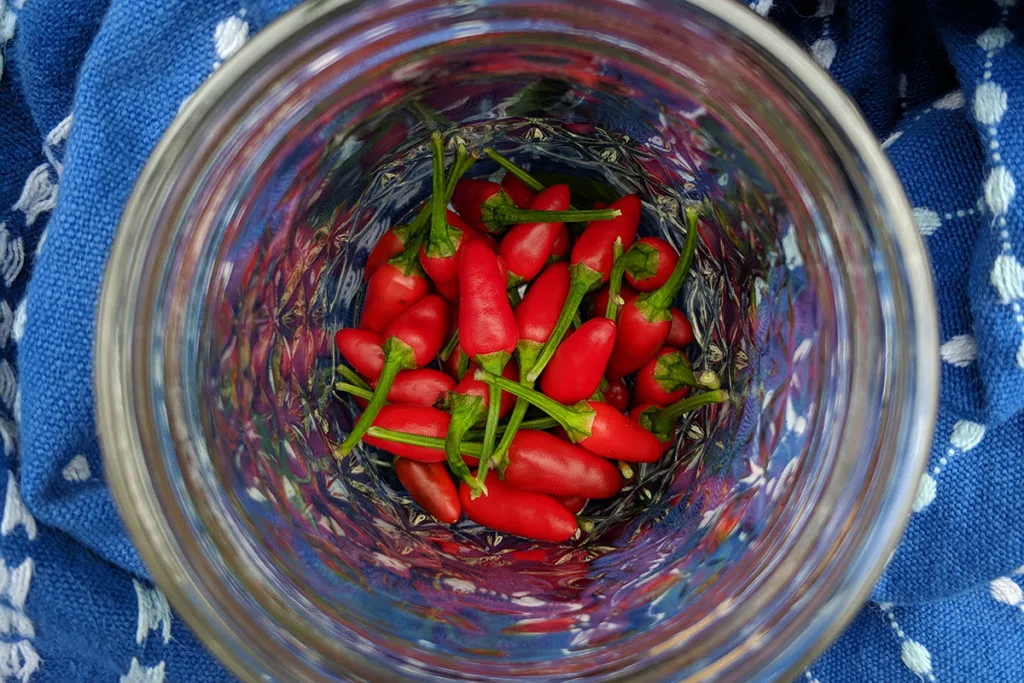
SHU – 50,000 – 175,000
These are similar to Thai Chilis, only a bit smaller, usually an inch to two inches long. Don’t let their size fool you; they still pack quite a punch. The piri piri was brought from Peru to Africa centuries ago and naturalized to grow wild in Africa.
Because the peppers and the plants are quite compact, the piri piri is a perfect hot pepper for container gardening. Not only do these peppers add spice to your cooking, but they make a pretty addition to your patio. And you can’t make piri piri chicken without them, which you should make because it’s delicious.
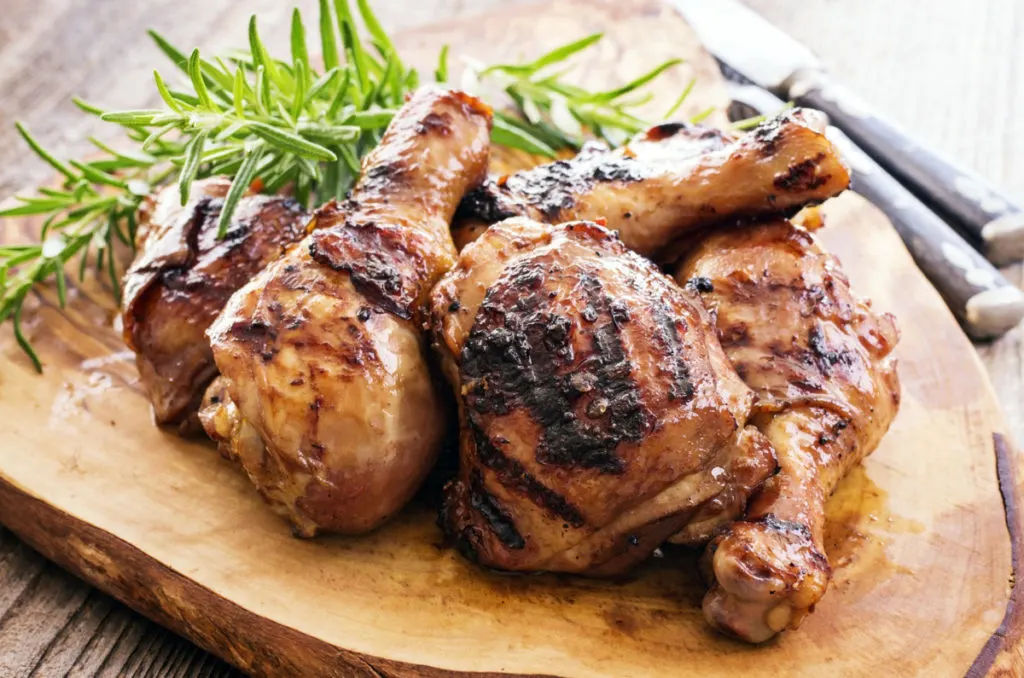
9. Serrano
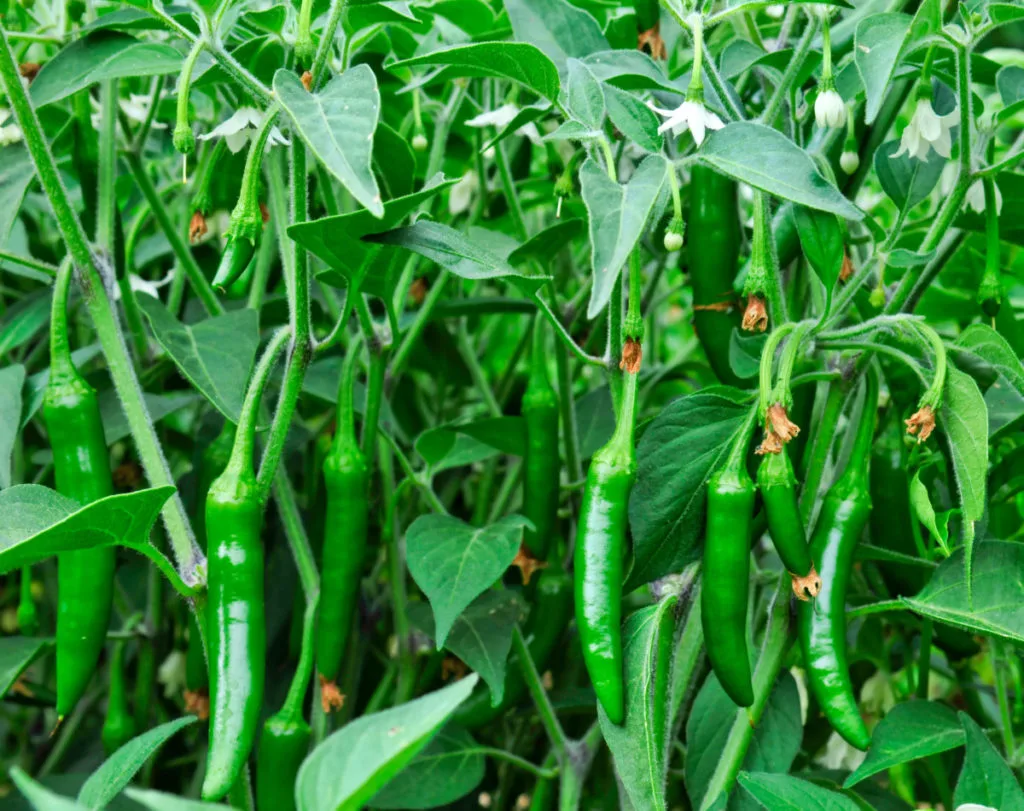
SHU – 5,000 – 15,000
Serranos are great quick-maturing (around 55 days) hot peppers if you need your spicy kick ASAP. The peppers are pretty big for how quickly they mature, too, usually about 5” long. This is another great all-purpose hot pepper if you want a bit more heat than a jalapeno.
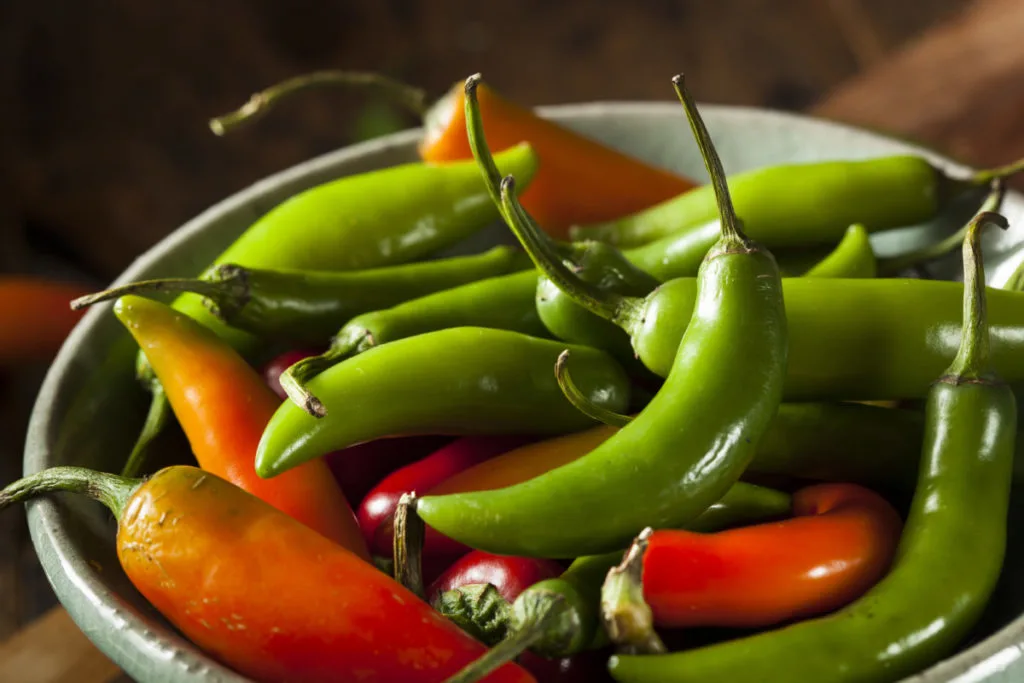
Use your serrano in everything from Thai to Mexican food. If you like your salsa extra spicy, ditch the jalapeno and use a serrano instead. It’s also another good pepper to use in a spicy pepper relish or a mix of pickled pepper rings. They’re also large enough to be a good pepper to roast or stuff.
10. Carolina Reaper
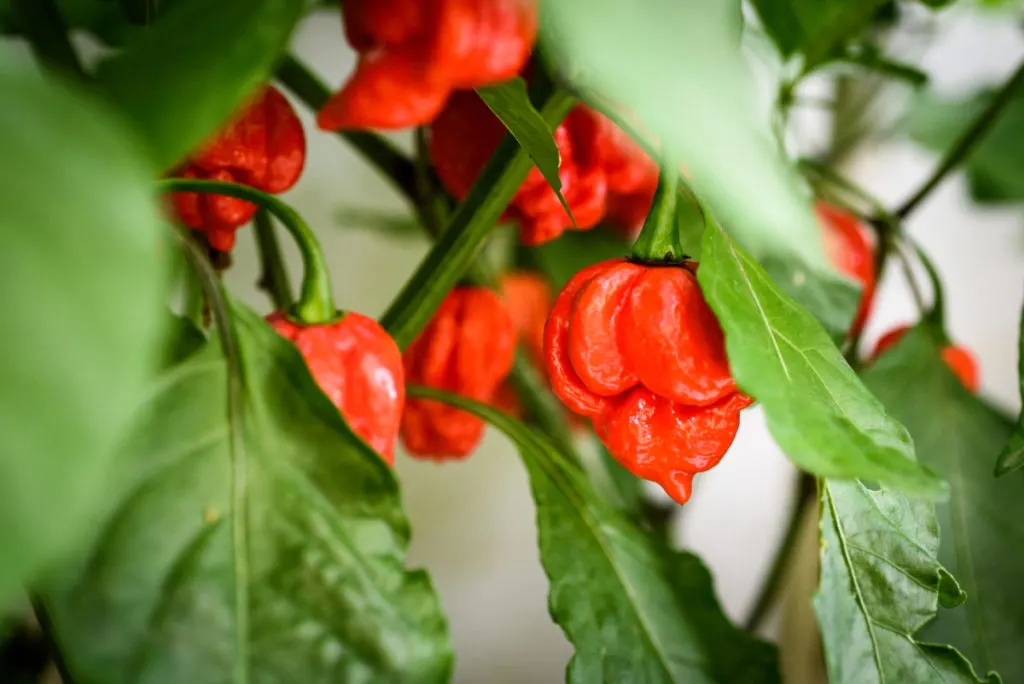
SHU – 1,641,000 – 2,200,000
I’ve saved this little scorcher for last. Did you see the SHU? Yup, in the millions.
The Carolina Reaper is currently the world’s hottest pepper. Only serious pepper-heads should grow this bad boy. I mean, just look at them; it even looks scary to eat. I’ve seen them in nurseries occasionally, but this may be one pepper you’ll need to start yourself or source a seedling online.
These peppers, in particular, are slow growers, taking 90-100 days to mature. Beyond that, treat them like you would most other pepper plants. The mind-numbingly hot peppers are quite compact, coming in at around 1-3” long.
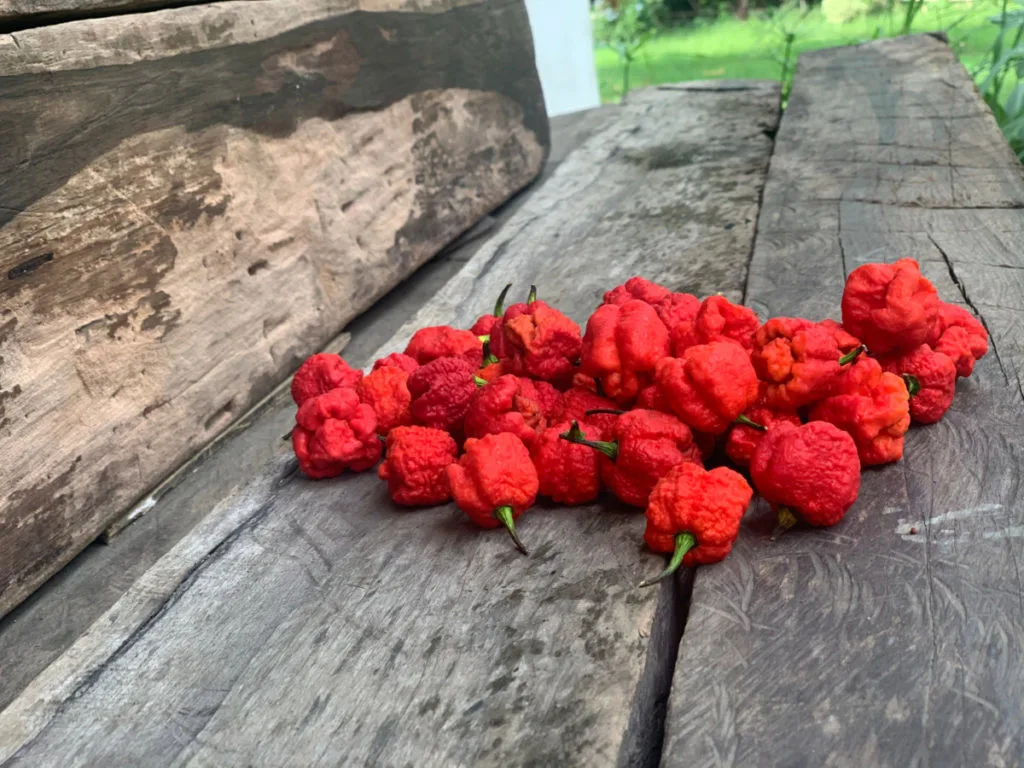
My experience with this pepper is in the form of a locally made hot sauce called Tame the Reaper. It was anything but tame. A drop or two per dish was all I could handle. But wow, it was good.
I’ve got a seedling ready to go in the garden this spring, and I have no idea what I’m going to do with these terrifyingly hot red beasties.
The Carolina Reaper is nearly 200 times hotter than your typical jalapeno, so with that in mind, this is a gloves and goggles pepper for sure.
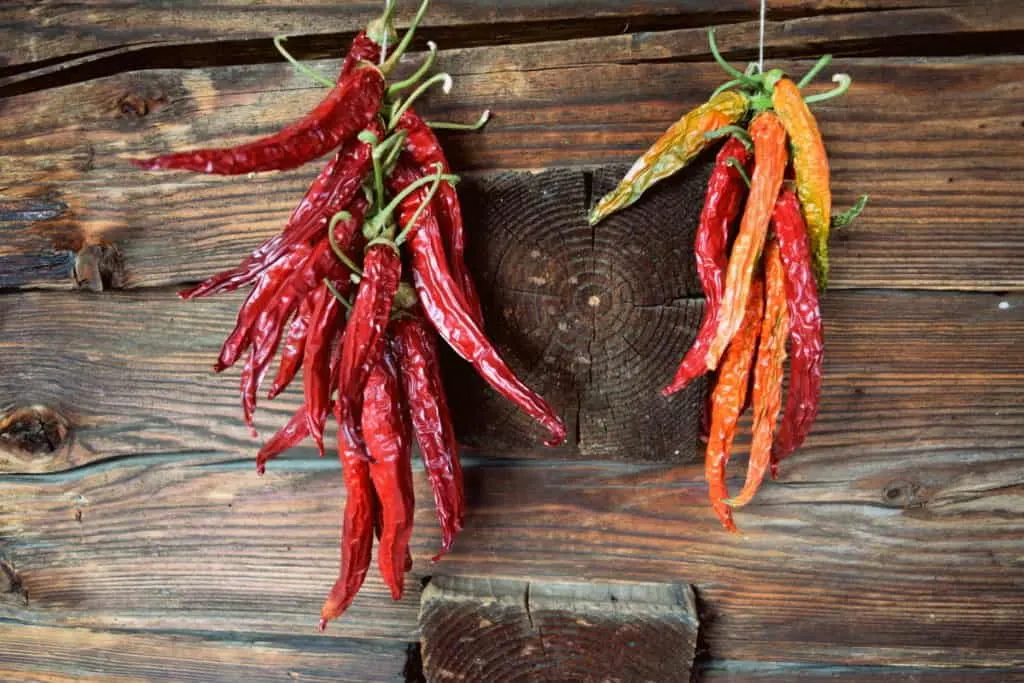
Now that you’ve got a garden full of heat, you’ll want to know Cheryl’s 3 Easy Ways to Dry Hot Peppers.
You’ll stay toasty warm all winter long, adding a few dried hot peppers to your dishes. Who knows, perhaps you’ll even create your own line of hot sauces. If you do, let me know, I’m a sucker for a bottle full of liquid heat.

Get the famous Rural Sprout newsletter delivered to your inbox.
Including Sunday musings from our editor, Tracey, as well as “What’s Up Wednesday” our roundup of what’s in season and new article updates and alerts.

